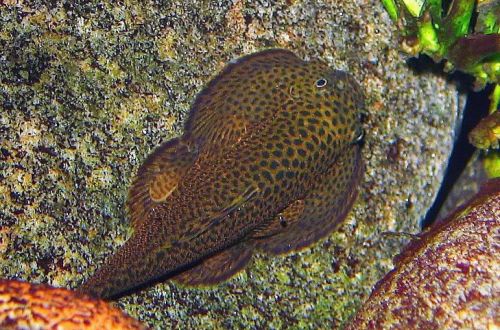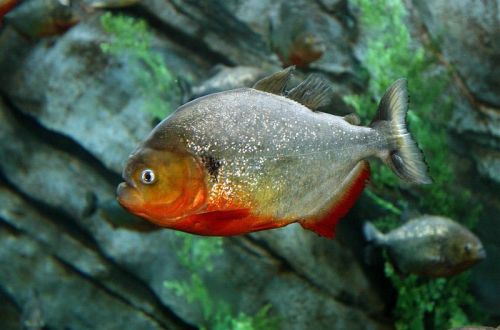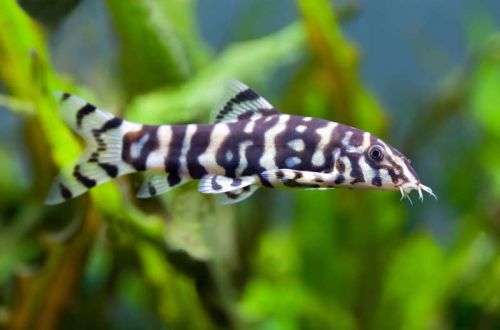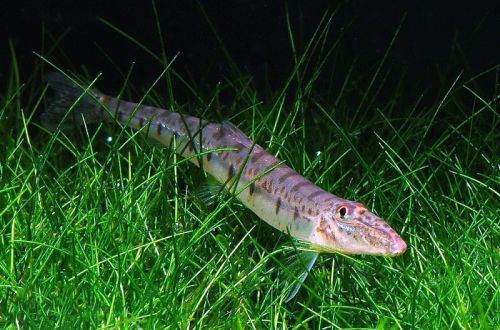
Butterfly Loach
Befortia or Butterfly Loach, scientific name Beaufortia kweichowensis, belongs to the family Balitoridae (River loaches). It is named after its discoverer, the Dutch zoologist Lieven Ferdinand de Beaufort. The fish is distinguished by an unusual body shape, for which it is valued by many aquarists. Not recommended for beginners, as it requires special conditions of detention.

Contents
Habitat
It comes from the territory of modern China. Wild specimens of this species have been caught in the Guizhou province, located in a mountainous area in the southwest of the country. Fish live in numerous mountain rivers with a rapid current and numerous rapids. The natural habitat is characterized by rocky substrates and lack of aquatic vegetation. Not deep and well-lit reservoirs are a favorable environment for the growth of algae. They cover stones and boulders with a thin film, which is the habitat of various microorganisms. This biofilm serves as the main food source for the Befortia.
Brief information:
- The volume of the aquarium – from 60 liters.
- Temperature – 16-24°C
- Value pH — 6.5–8.0
- Water hardness – soft to medium hard (2-15 dGH)
- Substrate type — stony
- Lighting – moderate / bright
- Brackish water – no
- Water movement is strong
- The size of the fish is 6–7 cm.
- Nutrition – plant-based food, algae
- Temperament – peaceful
- Content in a group of at least 3–4 individuals
Description
Features of the habitat led evolution to the creation of an unusual body shape for this fish. The disk-shaped, strongly flattened shape with large fan-shaped fins allows it to settle down to the surface of the stones, thereby making it possible to withstand strong currents. Outwardly, it resembles Gastromizons living in similar conditions, which is why they are often confused.
Adult individuals reach a length of about 6–7 cm. Sexual dimorphism is weakly expressed. Females are only slightly larger than males. The coloration is brown with black dots all over the body.
Food
The basis of the diet should be algae. It is advisable to stimulate their growth directly in the aquarium. You can also use a separate tank with bright lighting, in which various objects are placed. As they become overgrown with algae, the items are placed in turn in the main aquarium. If it is not possible to keep another tank for algae, you will need to purchase special gel-like plant-based fish food. A small amount of gel is smeared on the side of a stone on the opposite side of the current.
Various dry foods are not welcome, because with a strong current they will circulate in the stream and only lead to water pollution.
Maintenance and care, arrangement of the aquarium
The optimal size of the aquarium for a pair of fish starts from 60 liters. Pebbles, rocky soils, large smooth stones and other similar elements are used in the design. There is no need for living plants. Natural driftwood can become a place for active growth of algae.
Like any fish originating from flowing waters, Butterfly Loach needs very clean and oxygen-rich water. In addition, an internal flow with a turnover of about once per hour should be ensured. For example, with an aquarium of 50 liters, the filter capacity should be 500 liters of water per hour. A smaller current is also acceptable, since in small tanks it will be a real whirlpool.
Behavior and Compatibility
Befortia calmly treats representatives of other aggressive species. However, due to the special conditions of detention, choosing suitable tankmates becomes not an easy task. In nature, they are found in small groups, so you should also purchase in the amount of 3-4 individuals. In large clusters, a clear internal hierarchy will be observed, despite this, no intraspecific conflicts have been noted. The females will stick together, the alpha male will take the best place and will not let others near him. Subdominant males will share the remaining space on the bottom among themselves.
Breeding / breeding
At the time of writing, no successful cases of breeding Befortia in home aquariums have been recorded. They come into the trade from commercial fish farms or are caught in the wild.
Causes of diseases
The main cause of most diseases comes down one way or another to the conditions of detention. Insufficient flow, low oxygen levels, a lot of organic waste, cloudy water with inappropriate pH and dGH values, poor quality food – all of these individually or in combination with a high degree of probability can lead to health problems in fish.
As a rule, various bacterial infections or microorganism infestations are secondary, as a result of a weakened immune system due to improper housing conditions. You can put an equal sign between a favorable habitat and the health of the Loach Butterfly.





